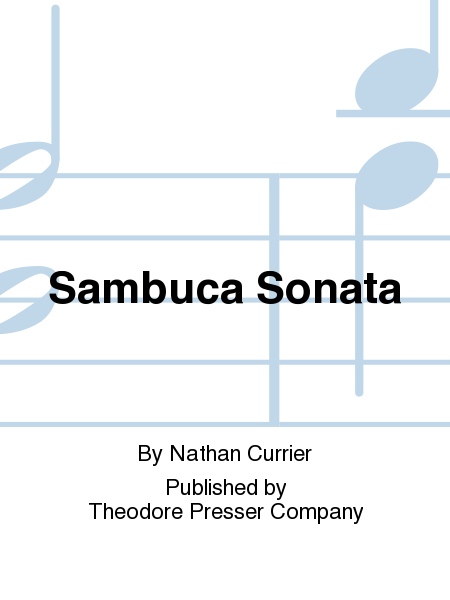Sambuca Sonata
For Flute, Viola, and Harp
-
Ships in 2 to 3 weeks
Details
Description
SKU: PR.114407190
For Flute, Viola, and Harp. Composed by Nathan Currier. Contemporary. Set of Score and Parts. With Standard notation. Composed June 15 1993. 43+16+15 pages. Duration 11 minutes, 30 seconds. Theodore Presser Company #114-40719. Published by Theodore Presser Company (PR.114407190).UPC: 680160011063. 8.5 x 11 inches.
Sambuca, which most people know today as a licorice-flavored liqueur, was the name the Greeks gave to a kind of sharp, shrill-sounding harp, of Eastern, possibly Jewish origin. The Greeks then gave this same name to a wooden flute made from the elder bush, and in the middle ages it was also associated with the voil, at least to the extent that the Hurdy-gurdy, an instrument shaped like a viol and played by means of a rotating wheel, was sometimes called a "Sambuca rotata". Thus, the word Sambuca is tied up with the ancestors - in each case, ancestors of low birth, as it were - of the modern harp, flute, and viola. Somehow, the present-day association with alcohol seems very meet, in that a certain objectionable quality seems to have gone with the name - in 1545 one George Ascham wrote, "This I am sure... all maner of pypes, barbitons, sambukes.. be condemned of Aristotle". The word Sambucistria - for a female Sambuca player - was used by Plutarch and others to evoke a feeling of "foreign-inspired decadence" [Grove's Dictionary of Musical Instruments, 1984]. Currier's work is truly a Sambuca sonata. Written for the three Sambuca instruments, Currier has first of all seemingly endeavoured to make the harp part particularly "Sambuca-like" (i.e., sharp and shrill) with its many nail and xylophonic effects, but more importantly, has used musical material that corresponds to the low-brow, somewhat Dionysian, indeed, today even Bacchanalian implication of the name - thus, rock music seems to inspire a great deal of Currier's work [the Samba, an appropriately Bacchanalian Brazilian Carnival dance, in duple meter with syncopations, while apparently having no etymological connection to Sambuca, might seem to be musically involved, too]. The Sambuca which lies behind this rather drunken piece is probably the only musical instrument which became a model for an instrument of war; one Craxton wrote in 1489 that "Sambuce is an engyn whiche is made in manere of a harpe able to perce a walle". But whether talking of the modern liqueur of the ancient instrument "condemned of Aristotle" and mentioned four times in the Book of Daniel, it is a shame Debussy - inspired by the Dionysian side of classical culture (as in "Prelude a L'apres-midi d'un faune") - seems to have remained ignorant of Sambuca, a word which to some extent must lie behind all works for this wonderful instrumentation which he invented, and which Currier might seem to have striven unconsciously, equally ignorant, to make the sole basis of his work - until, having completed this piece, written for harpist Marie-Pierre Langlamet, and rummaging around for a title, he chanced upon it in an old dictionary.

 Share
Share